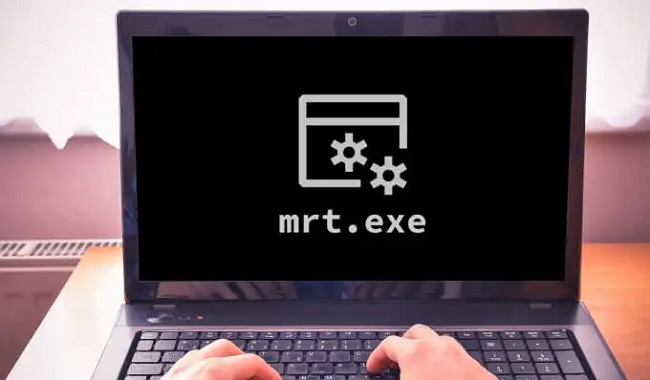When unknown system files start eating up your CPU or RAM, you should be suspicious of their legality.
A red flag should go up if you open Task Manager and see that a program named MRT.exe is using an abnormally large portion of your CPU. mrt.exe will be defined and its functions will be described in this manual. You’ll also figure out whether or not the file you’ve saved on your computer is secure.
What is mrt.exe?
Even while mrt.exe sounds like a lot like a famous character from the 1980s TV program The A-Team, there is no connection between the two. If you’re using mrt.exe, though, you should feel sorry for the fool who tries to install malware on your computer. In Windows, mrt.exe is the Malicious Software Removal Tool.

Microsoft’s helpful tool scans for and deletes viruses from your computer. The program is widely available and preinstalled in most Windows distributions without cost. Simply enter mrt into Windows’s search box to get started. After starting the program, your computer will be scanned for any threats.
Why Does MRT EXE Access the Network?
When we ran the GlassWire network security monitor on our Austin, TX, USA-based devices, we discovered that igfxem.exe communicates with Microsoft servers at wd-prod-cp-us-west-1-fe.westus.cloudapp.azure.com.
We believe the app makes this connection for telemetry, upgrades, and security purposes. After careful consideration, we have decided that mrt.exe can safely connect to the internet.
Is MRT EXE Safe? 3 Ways to Check
Microsoft has included the Malicious Software Removal Tool in Windows since version 7. Nothing bad will happen to your PC as a result of using this. A virus could be masquerading as the Malicious Software Removal Tool if the Task Manager shows that mrt exe is constantly running. Follow the steps below to check if the mrt.exe file on your computer is the real deal or a fake.
1. Check the File Location
When using a computer running Windows 10, navigate to the system32 folder (C:WindowsSystem32) mrt exe to access the Malicious Software Removal Tool program. Infection is more likely if the file is not in the specified location. Below are the measures you should take to verify the location of the mrt.exe file on your computer.
Step 1: Start Windows Task Management by pressing Ctrl + Shift + Esc.
Step 2: Right-click MRT.exe in the Details section, then select Open file location from the drop-down menu.
Step 3: Type mrt.exe into the Windows Search box, then right-click to open the file’s location if you can’t locate it in the Task Manager.
Step 4: That will launch a new instance of File Explorer with the mrt exe file selected.
Step 5: Check the file’s location by clicking the address bar in File Explorer’s upper-right corner.
2. Check the File’s Digital Signature
While infecting your computer, several trojans and worms may replace the legitimate mrt exe file with a malicious variant. Trend Micro, a company specializing in cyber security, has reported an infection with the TROJ TIBS.DC malware.
Another reliable method of determining whether or not you are in possession of an original copy of MRT.exe is to check its digital signature. In the File Manager or Finder, right-click MRT.exe and select Properties.
Locate the Name of signer column in the Digital Signatures subtab. Infected copies of the MRT.exe file will have a publisher or signer that isn’t Microsoft Windows. To eliminate the threat, scan the file with your antivirus software or remove it from your computer.
A number of copies of MRT.exe may show up in the Task Manager. If that’s the case with your computer, double-check the digital signature and file location of every instance.
3. Scan with an Online File Analyzer
If you don’t have anti-malware software installed on your computer, you can utilize a website like VirusTotal to see if the MRT.exe file is harmful. To submit the MRT.exe file for scanning by VirusTotal, go to the site’s File section. VirusTotal will examine the file for viruses, Trojan horses, and other forms of harmful software.
Should You Delete MRT EXE?
If mrt.exe can be found in a location other than system32, the Malicious Software Removal Tool should be deleted. If the file isn’t signed by Microsoft or if it raises red signals in your antivirus program, you should also get rid of it.
You don’t need Windows’ Malicious Software Removal Tool if you’re already using another program to detect and eliminate malware. But, for your computer’s safety, we advise keeping the tool on hand. If you have removed mrt.exe due to issues or counterfeiting, you can get a new copy from Microsoft’s website and reinstall it.
You can also reinstall a legit copy of mrt.exe by using Windows’s built-in System File Checker (SFC) or the Check Disk Utility. To apply a Windows Update, select it from the menu under Settings > Update & security > Windows Update > Check for updates.
Conclusion
The Malicious Software Removal Tool for Windows can be accessed by running the MRT EXE program. This file is standard on all Windows PCs. You may periodically scan your computer for common malware, viruses, and worms with Microsoft’s Malicious Software Removal Tool.
The Malicious Software Removal Tool sleeps quietly in the background and wakes up once each month to do its job. It also allows you to manually scan your computer with either a Fast scan, Complete scan, or a Custom scan.


